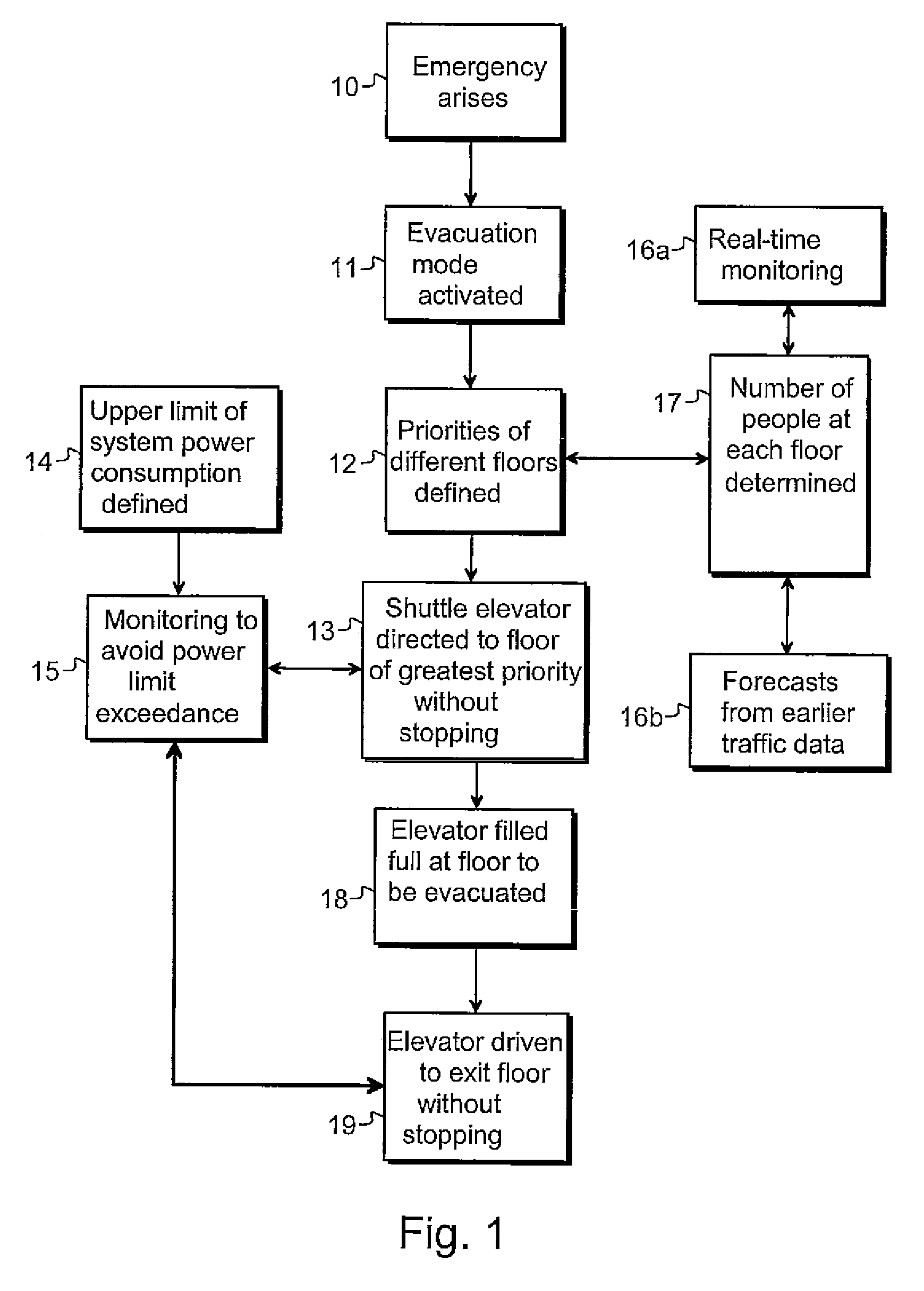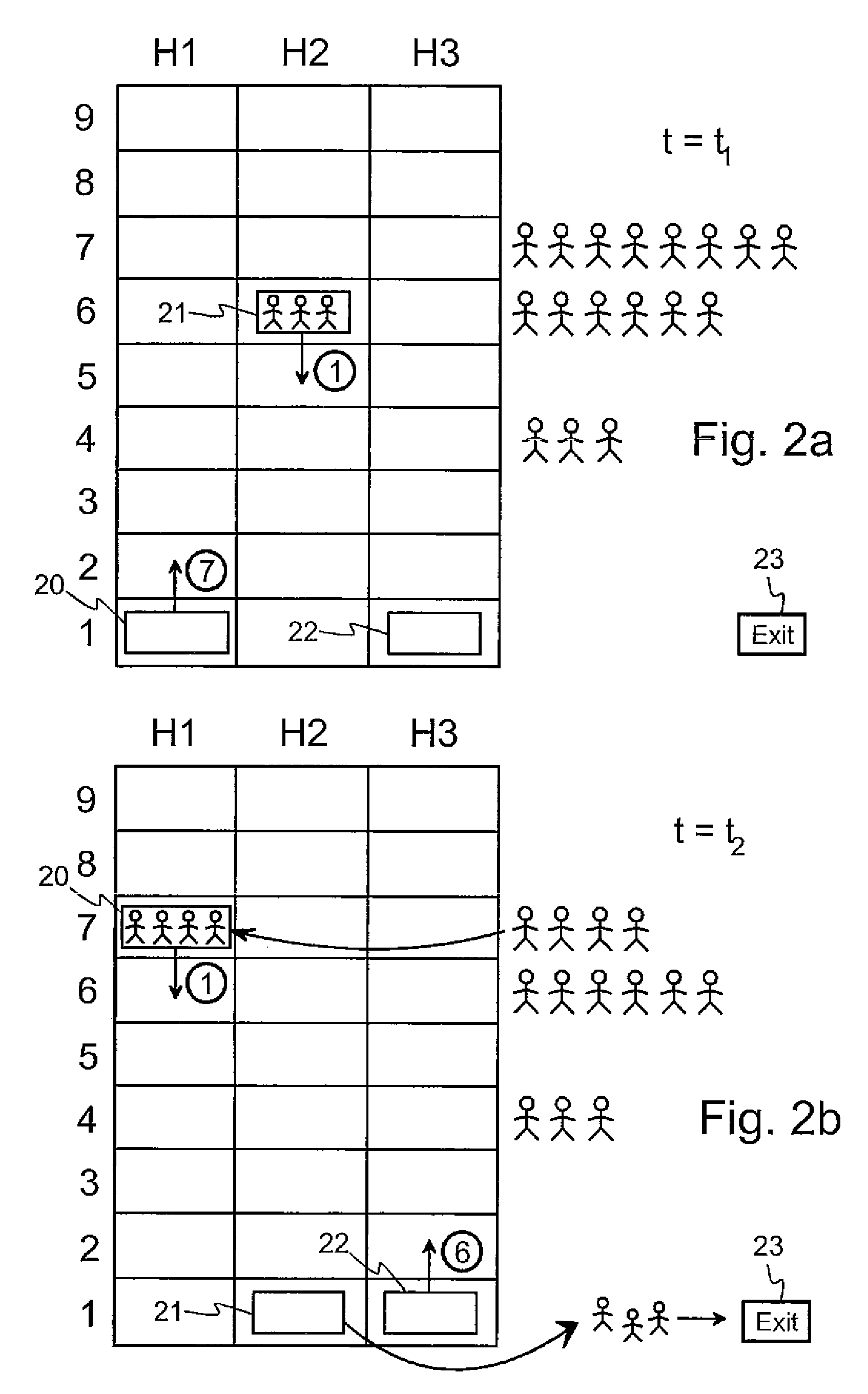Elevator system
a technology of elevator system and elevator shaft, which is applied in the direction of emergency power supply arrangement, electrical apparatus, instruments, etc., can solve the problems of affecting the safety of people in the building, affecting the safety of the elevator system, and not being able to guarantee the optimal value of the gene algorithm. , to achieve the effect of improving safety and good performan
- Summary
- Abstract
- Description
- Claims
- Application Information
AI Technical Summary
Benefits of technology
Problems solved by technology
Method used
Image
Examples
Embodiment Construction
[0043]The present invention discloses a method for effective evacuation of a building using the elevators of the building. It can be assumed that the building contains elevators and stairways as well as travelators, or only some of these types of conveyance. If the building to be monitored is high-rise, it can contain both shuttle elevators and so-called local elevators. Shuttle elevators are intended for longer floor-to-floor distances in a high-rise building such that a shuttle elevator serves only e.g. the upper floors of a high-rise building. In this case from the lobby floor it is only possible to go to the desired upper floor and vice versa. This enables fast elevator service on the upper floors of a high-rise building.
[0044]It must be noted that shuttle elevators consume more power than so-called conventional elevators.
[0045]In addition to shuttle elevators, so-called local elevators are needed, with which the other floors of a high-rise building are served. In this case inte...
PUM
 Login to View More
Login to View More Abstract
Description
Claims
Application Information
 Login to View More
Login to View More - R&D
- Intellectual Property
- Life Sciences
- Materials
- Tech Scout
- Unparalleled Data Quality
- Higher Quality Content
- 60% Fewer Hallucinations
Browse by: Latest US Patents, China's latest patents, Technical Efficacy Thesaurus, Application Domain, Technology Topic, Popular Technical Reports.
© 2025 PatSnap. All rights reserved.Legal|Privacy policy|Modern Slavery Act Transparency Statement|Sitemap|About US| Contact US: help@patsnap.com



